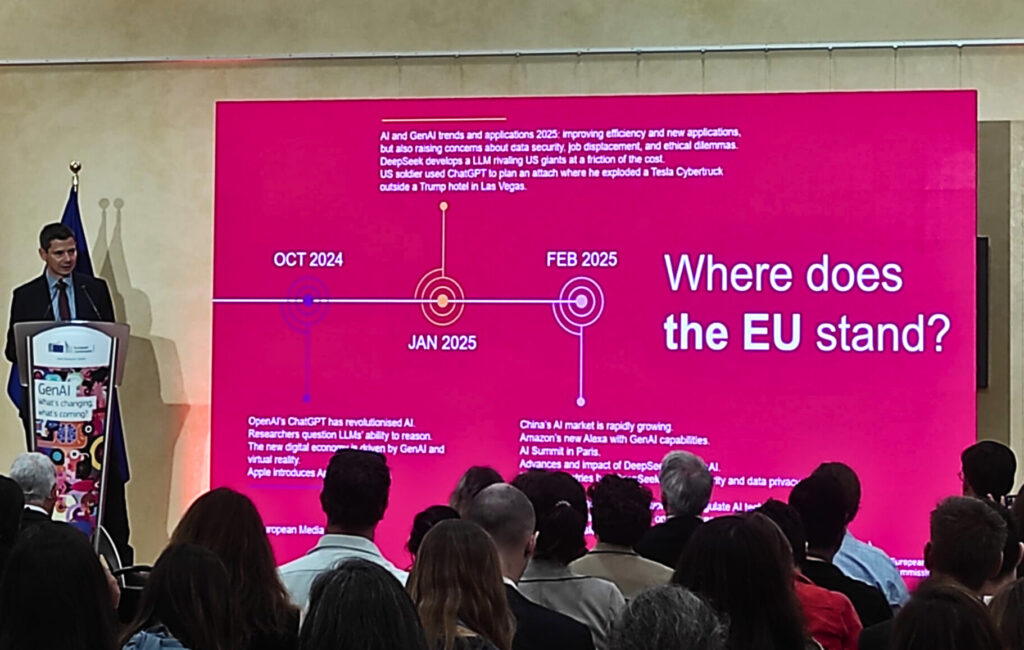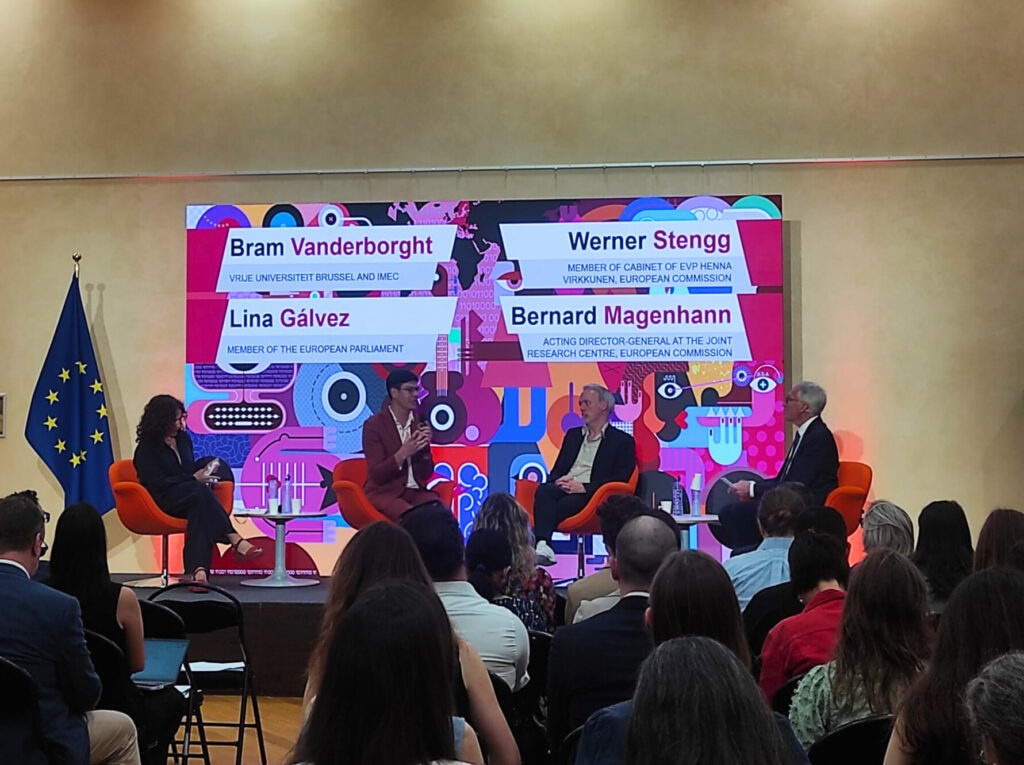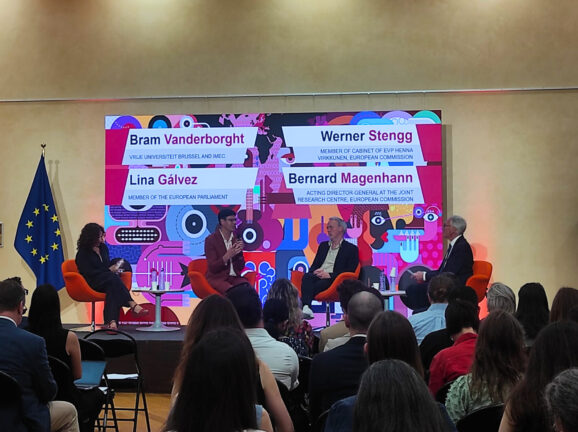The European Commission’s Joint Research Centre unveiled its first-ever Outlook Report on Generative Artificial Intelligence last Friday. The report delivers what officials call the most comprehensive analysis to date on the technological, economic, and societal implications of generative AI (GenAI). It underscores both its transformative potential—and the policy gaps.
Opening the event, Ekaterina Zaharieva, EU Commissioner for Startups, Research and Innovation emphasised that GenAI is already reshaping daily life, “Generative AI will change the way we work and live,” she said, setting the tone for a conversation that would span sectors, regions, and regulatory approaches.
Generative AI will change the way we work and live.
EU Commissioner Ekaterina Zaharieva
Where does the EU stand?
Michele Vespe, Head of the JRC’s Digital Economy Unit, walked participants through the report’s key findings. During a pivotal moment underscoring the report’s real-world focus, Mr Vespe unveiled a word cloud generated by the JRC’s GPT. The visualisation highlighted policymakers’ top concerns—including “bias”, “transparency”, “job displacement”, “fairness”, and “economic impact”—with these terms rendered in prominent, large lettering. He traced the technological timeline from early January 2023 until today and posed a fundamental question: Where does the EU stand?

More than chatbots
In a panel moderated by Acting JRC Director-General Bernard Magenhann, four speakers explored the real-world implications of generative AI and what Europe must do next.
Bram Vanderborght, professor at Vrije Universiteit Brussel and researcher at Imec, stressed that GenAI should not be viewed solely through the lens of language or content generation. He pointed to applications in robotics and physical AI, noting that large multimodal models (LMMs) can train humanoid robots.
Mr Vanderborght also flagged Europe’s fragmented robotics startup ecosystem and called for joint facilities that can help bring AI applications from research labs into the real world. He cited Denmark and Switzerland and their more concentrated innovation ecosystems as potential models for collaborative progress.
You might be interested
Gaps in data, gaps in society
Asked whether technology can help close equality gaps, MEP Lina Gálvez (S&D/ES) was blunt in her assessment: The impact of GenAI is not uniform. “Technology changes are a double-edged sword,” she answered, noting that the outcomes “are not the same for every woman or territory.” She warned that biased data leads to biased models, stating that unless more women participate, the biases won’t disappear.
In a later exchange, Ms Gálvez referenced the need to attract talent. “We need more Europe,” she said, emphasising that untapped human capital, particularly women, is a missed opportunity. She called on the sector to “play with the whole team, not just half the team.”
Play with the whole team, not just half the team.
MEP Lina Gálvez
Regulate the use, not the technology
On the policy front, Werner Stengg, Cabinet Member to EC Executive Vice-President Henna Virkkunen, addressed the challenge of balancing innovation with regulation. He reiterated the importance of “risk-based regulation”. His message was clear: Europe must move toward “fast but responsible” development, ensuring safeguards without stifling innovation.
Mr Stengg acknowledged that Europe faces stiff competition in a landscape currently dominated by global tech giants. However, he pointed to the EU’s strategic assets, particularly its supercomputing infrastructure, as foundational strengths. They could support a more competitive and sovereign AI ecosystem, were they better integrated.

Five-year forecast
As the event finale drew to a close, panellists fielded questions as to where they saw Europe in the AI landscape five years from now. Ms Gálvez displayed measured optimism. She pointed out the EU’s strong research base and long-standing ability to collaborate internationally, including with countries like China. In the fast-moving field, these are key assets.
Mr Vanderborght focused on healthcare and sustainability as sectors where GenAI and robotics could deliver major benefits. But he also mentioned the economic stakes, framing the transition not only as a technical challenge but also as a strategic economic opportunity.
Mr Stengg acknowledged the continent’s somewhat slow start to the race. “Europe lost the first battle,” he admitted, referring to the current dominance of non-European AI players. Still, he emphasised the EU’s determination to catch up. Major steps are both necessary and underway, he concluded.
Europe’s AI moment
Throughout the event, one theme was clear: the EU’s distinctiveness in the AI race may not lie in speed, but in stewardship. From data governance to digital inclusion, the Outlook Report aims to support a European vision of AI that is trustworthy, human-centric, and strategically coordinated. Whether that’s enough to translate policy foresight into global leadership remains an open question. The report, however, shows clearly that the EU is determined to have a seat at the table.





